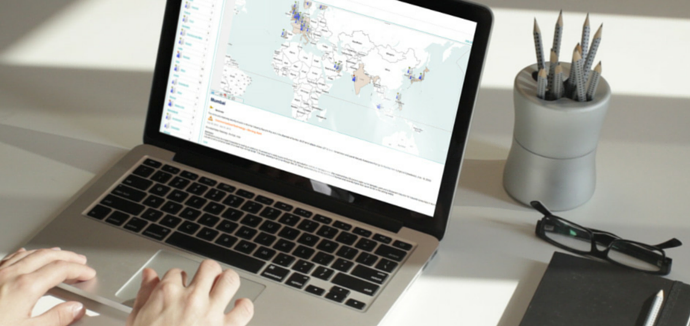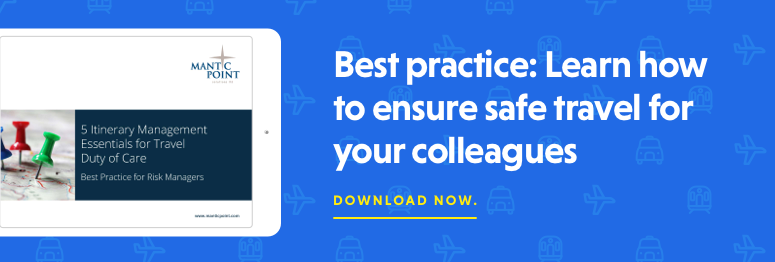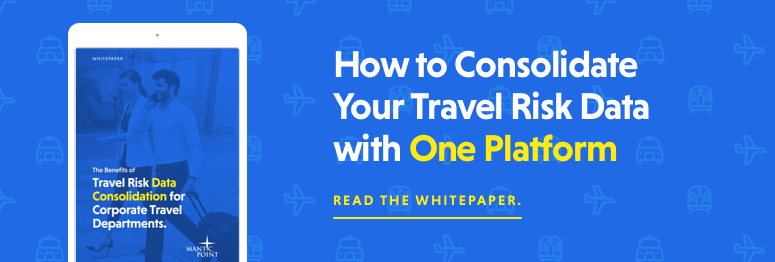3 ways travel itinerary management can alleviate travel risk
Posted by Mike Atherton on 09 December, 2015

Sudden, unexpected events overseas can have major implications for businesses with travelling employees. While such travel risks are unavoidable, travel managers, with the right tools, can take steps to alleviate risk and protect employees.
Using a hypothetical scenario, here’s how a travel itinerary app can empower travel managers to properly support travelling employees, in line with their business’s duty of care responsibilities.
Traveller tracking
Political unrest and subsequent protests in Malaysia have elevated the level of danger in major cities in the country. C-level Executives and senior managers in your business occasionally travel to this region to meet suppliers.
It’s vital that in this situation, or any situation where something unexpected occurs, you can quickly identify whether any of your travellers are affected.
Itinerary management tools enable you to track travellers so you know exactly where they are in times of risk. Using your tracker tool, you discover that your company’s CIO is indeed in Malaysia. Now you can react to the risk, and take steps to ensure his safety, by, for instance getting him away from major cities or on the next flight home. But how do you communicate with him?
Automated Communication
To support your CIO, you need to provide him with travel information and clear directions, as quickly as possible. In this case you deem it necessary to get him on the next plane home.
An itinerary management tool, with pre-defined criteria set according to your travel policies, makes it possible to send him notifications via text, email or push notifications about the travel arrangements made for him. With this information, he arrives at the airport ready for his flight.
However, due to the unrest in the country, airports are considerably busier than usual, leading to flight delays. Before your CIO gets a chance to tell you, you know already. The itinerary management tool has been setup to automatically alert travel managers when an employee’s flight is delayed by more than three hours. You send him another message to support him during his wait.
Audit trail
Your CIO leaves Malaysia and arrives home, having been provided with the information he needed. Job done? Not quite.
Itinerary management tools enable you to keep a thorough record of employee travel and the support you provide. This is necessary for auditing to demonstrate to all stakeholders – internal and external – that your company is meeting its corporate social responsibilities. Additionally, with this information, you can analyse your travel risk procedures, ensuring you meet your duty of care responsibilities to your employees. You can then plan and fine-tune your processes for reacting to unexpected situations.
In this case, you decide that although your CIO felt well-supported and safe throughout the ordeal, in future you should send communication for shorter flight delays, as it can be a stressful time. You change the automatic internal alert for flight delays from at least three hours to an hour.
To find out more about the itinerary management elements that ensure your organisation’s travel risk is appropriately managed, download our eBook about best practises for risk managers.


